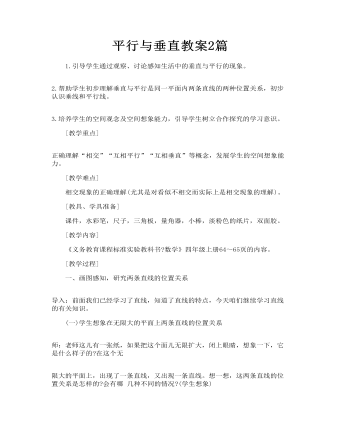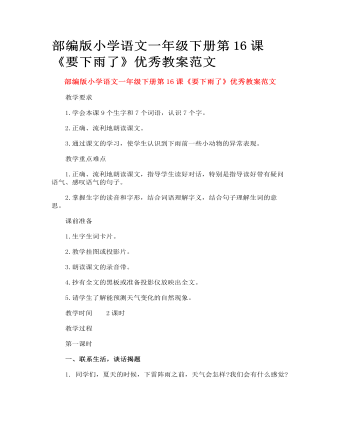新人教版高中英语必修2Unit 4 History and Traditions-Discovering Useful Structure教案二
-
- 页数:5页
- 字数:约 5547 字
- 大小:79.08KB
- 格式:.docx
- 版本:Office2016及以上版本
- 作者:天行健工作室
Unit 4 History and traditions-Discovering Useful Structure教案
过去分词做宾语和宾补导学案
This teaching period mainly deals with grammar: The past participle isused as attributive and objective complement.
1. Guide studentsto review the basic usagesof the past participle used as attributive and objectivecomplement.
2. Lead students to learn to use some special casesconcerning the past participle used as attributive and objective complement flexibly.

3. Strengthen students’great interest in grammar learning.
1. Help students to appreciate the functionof the past participle used as attributive and objectivecomplement.
2. Instruct students to write essays usingthe past participle used as attributive and objective complement.
Step1:温故而知新。
Analyze the underlined phrases and then sum up the common usages of thepast participles.
1.(教材P41)Theyhad castles built(build) all around England, and made changes to thelegal system.
2.(教材P42)Theyuse the same flag, known(know) as the Union Jack,...
3.(教材P42)Judyand I had our car parked(park) in an underground car park near TrafalgarSquare, where we could get our car battery charged(charge).
Common points: f the pastparticiple used as attributive and objective complement.
Step 2:过去分词作定语时的意义
1.及物动词的过去分词作定语,在语态上表示被动;在时间上,常表示动作已经发生或完成,有时也不表示时间性。
Our teacher watched us doing the experiment and gave us a satisfied smile at last.
我们的老师看着我们做实验,最后给了我们一个满意的微笑。
The plan put forward at themeeting will be carried out soon.
会上提出的计划将很快被执行。
2.不及物动词的过去分词作定语,它不表示被动意义,只强调动作完成。
Many little kids like gathering fallenleaves in the yard.
许多小孩子喜欢在庭院里收集落叶。
The risen sun is shiningbrightly in the morning.
早上已升起的太阳正明亮地闪耀着。
Step3:过去分词作定语时的位置
1.前置定语
一般情况下,单个过去分词作前置定语,即放在所修饰词之前。
The polluted water was toblame for the spread of cholera.
被污染的水造成了霍乱的传播。
We needed much more qualifiedworkers.
我们需要更多的合格的工人。
【考点提示】
有些过去分词表示特定含义时,单独作定语也可放在所修饰的名词之后,如left(剩余的),given(所给的),concerned(有关的)等。
There are few tigers left.It is time for the departments concernedto take measures to protect them from dying out.
剩余的老虎不多了,是相关当局采取措施保护它们免遭灭绝的时候了。
2.后置定语
过去分词短语作定语时往往作后置定语,即放在所修饰词之后,它的作用相当于一个定语从句。
He is a teacher loved by hisstudents.
他是一位受学生爱戴的老师。
The book published ten yearsago is still a bestseller today.
十年前出版的这本书现在仍然是一本畅销书。
3.过去分词与现在分词作定语的区别
意义
形式
语态
时态
过去分词
被动
完成
现在分词
主动
进行
As we all know, China is a developingcountry.
众所周知,中国是一个发展中国家。
The visitor is from a developedcountry.
这位游客来自一个发达国家。
4.过去分词(done)、现在分词的被动语态(being done)与动词不定式的被动语态(to be done)作定语的区别
意义
形式
语态
时态
done
被动
完成
being done
被动
进行
to be done
被动
尚未发生
The building built last yearis our classroom building.
去年建造的那栋楼是我们的教学楼。
The building being built nowis our classroom building.
现在正在建造的那栋楼是我们的教学楼。
The building to be built nextmonth is our classroom building.
下个月将要建造的那栋楼是我们的教学楼。
Step 4: 常见的过去分词作宾语补足语的情况
1.过去分词用在表状态的动词keep, leave等词的后面作宾语补足语。
He passed away, leaving hisworks unfinished.
他去世了,留下他的著作还未完成。
Don’t keep your mouth shut when I ask you a question.
当我问你问题时不要闭口不语。
2.过去分词用在使役动词have/get和make的后面作宾语补足语。
(1)“have/get+宾语+过去分词”表示“让别人做某事”。
He wants to have/get his eyesexamined tomorrow.
他明天想去检查眼睛。
Jenny hopes that Mr.Smith will suggest a goodway to have her written English improved in a short period.
珍妮希望史密斯先生会建议一个好的方法以使她的英语写作在短期内得到提升。
(2)在“make+宾语+过去分词”这种结构中,过去分词表示结果。
They managed to makethemselves understood by using verysimple English.
他们用很浅易的英语来设法使自己被理解。
3.感官动词see, hear, notice, observe, watch, feel, find等后,可用过去分词作宾语补足语。
When we saw the road blocked with snow, we decided to spendthe holiday at home.
当我们看到道路被雪封住后,我们决定在家过假期。
The next morning people foundthe world outside their houses completely changed.
第二天早上,人们发现他们房子外面的世界全变了样。
4.表示“意愿;命令”的动词,如like, want, wish, expect, order等可用过去分词作宾语补足语。
The manager ordered the work finished at the end of this week.
经理要求在本周末完成这项工作。
5.过去分词用在“with+宾语+宾补”这一结构中,过去分词与宾语之间是动宾关系。
Withevery problem settled, he began tothink of a journey.每一个问题解决后,他开始考虑旅行。
Step 5:非谓语动词作宾语补足语的区别
1.感官动词(短语)see,watch, observe, look at, notice, hear, listen to, feel等的宾语补足语主要有三种形式,试比较(以hear为例):
hear+宾语+
I heard her singing an English song when I passedby her room yesterday.
昨天经过她房间时,我听见她正在唱一首英文歌。(主动、正在进行)
I heard her sing an English song just now.
刚才我听见她唱了一首英文歌。(主动、完成)
To learn English well, we should find opportunities to hear English spoken as much as possible.
为了学好英语,我们应该尽可能多地听英语。(被动、无时间性)
您可能喜欢的文档
查看更多
新人教版高中英语必修2Unit 3 The Internet-Discovering Useful Structure教案二
- 页数:4页
- |大小:118.87KB
热门课件教案

平行与垂直教案2篇
- 页数:9页
- |大小:101.04KB
- 课件教案

部编版语文八年级下册《时间的脚印》教案
- 页数:4页
- |大小:511.50KB
- 课件教案

部编版小学语文一年级下册第16课《要下雨了》优秀教案范文
- 页数:4页
- |大小:19.94KB
- 课件教案

音乐兴趣小组教案
- 页数:5页
- |大小:89.58KB
- 课件教案

部编版语文八年级下册《社戏》教案
- 页数:8页
- |大小:340.00KB
- 课件教案

人教版高中语文《小狗包弟》教案
- 页数:8页
- |大小:29.21KB
- 课件教案
今日更新

精选高中生期末评语
- 页数:42页
- |大小:7M

××县招商局2024年上半年工作总结
- 页数:12页
- |大小:142.54KB

“四零”承诺服务创建工作总结
- 页数:5页
- |大小:39.83KB

“改作风、提效能”专项行动工作总结
- 页数:6页
- |大小:139.05KB

“大学习、大讨论、大调研”活动情况总结报告
- 页数:7页
- |大小:26.12KB

2024年度工作计划汇编(18篇)
- 页数:72页
- |大小:196.93KB











